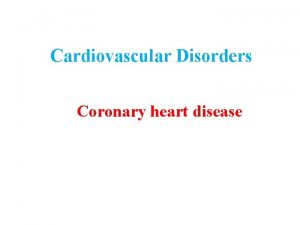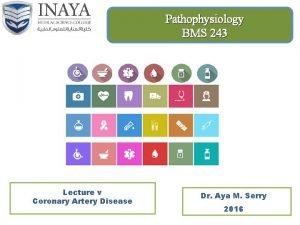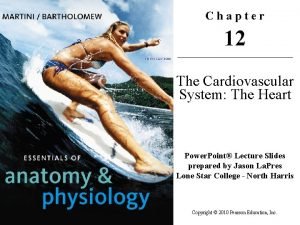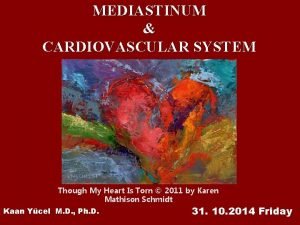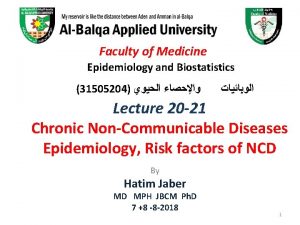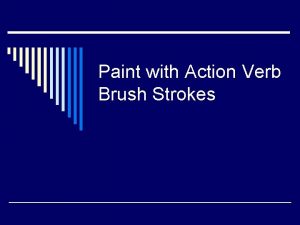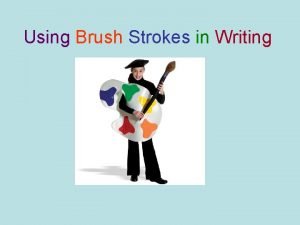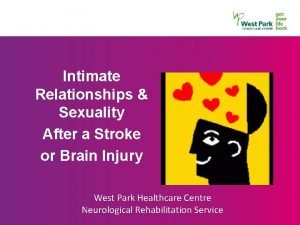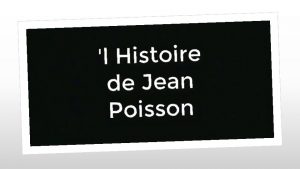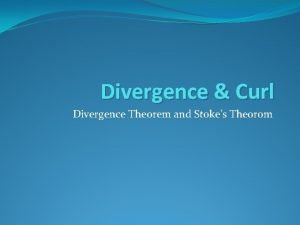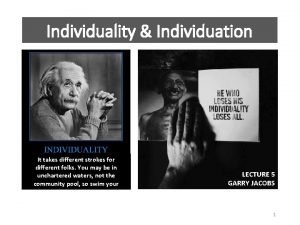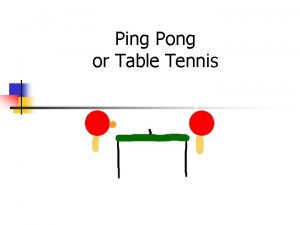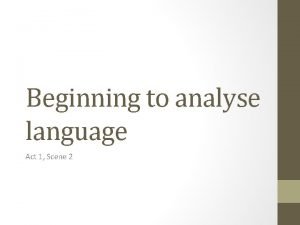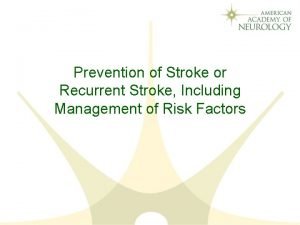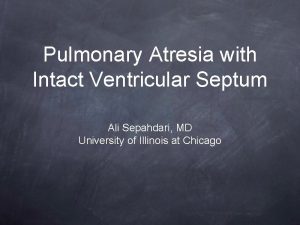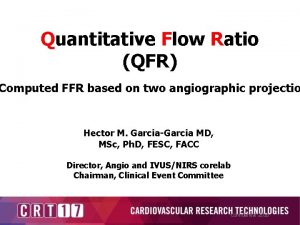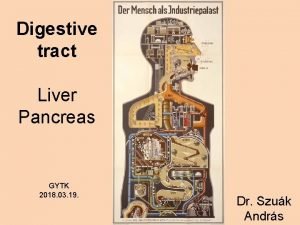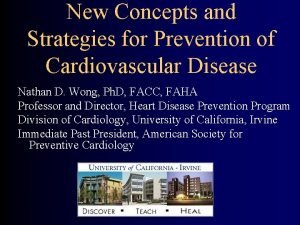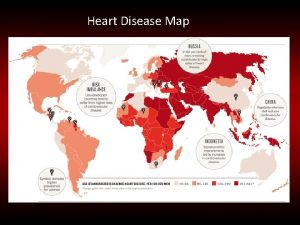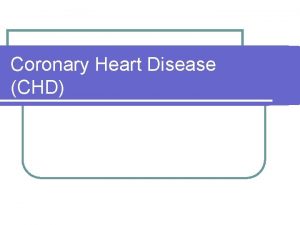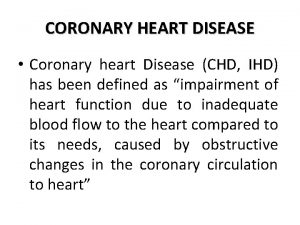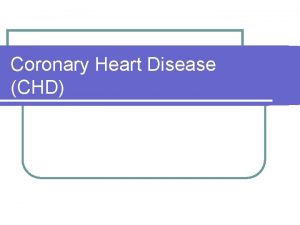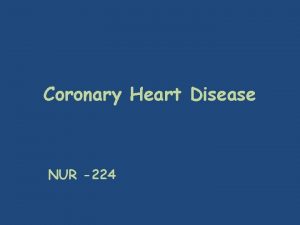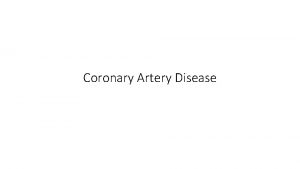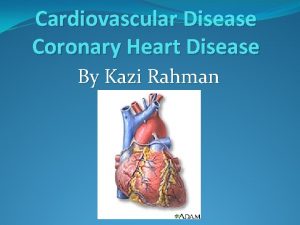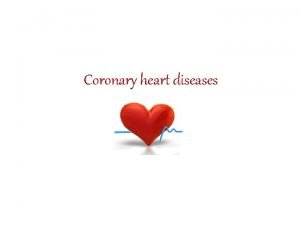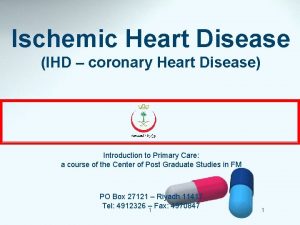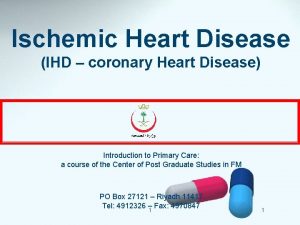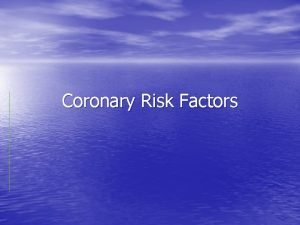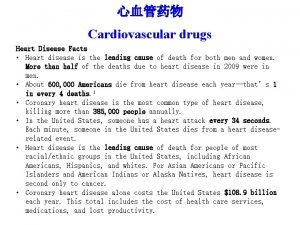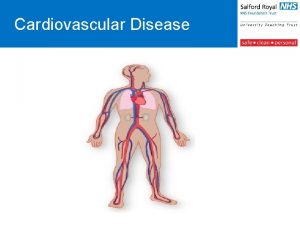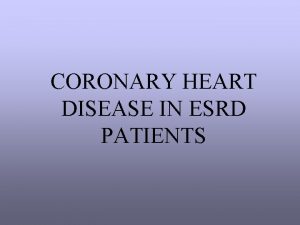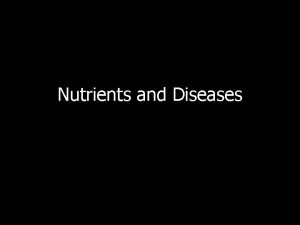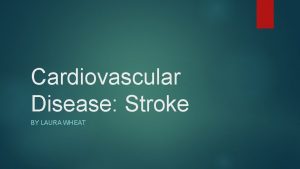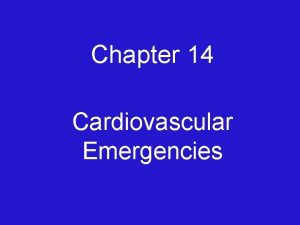Forms of cardiovascular disease Coronary heart disease Strokes
























- Slides: 24

Forms of cardiovascular disease • • Coronary heart disease Strokes Gangrene Aneurisms

Forms of coronary heart disease • Angina Chest pain after exertion Spreads to neck, jaws, arms, back Shortage of blood to heart (no muscle death) Cramp • Heart attack (myocardial infarction) moderately large coronary artery blocked sudden severe chest pain can be treated • Heart failure Blockage of main coronary artery gradual damage heart becomes steadily weaker NEXT

Embolism • A clot breaks off • It may lodge elsewhere Coronary artery – Heart attack Brain - Stroke • Gangrene • A thrombus has broken off (embolised) and travelled via the left ventricle to the left leg, where it has blocked an artery, cutting off the blood supply to the foot.

An occlusive stroke An artery is blocked

Aneurysm • Atherosclerosis narrows lumen of an artery • Increases blood pressure • This weakens the wall • Balloons out and may burst NEXT

Strokes due to aneurysm • Aneurysm in brain artery • Haemorrhage within brain • Stroke NEXT

Platelets • An electron micrograph of a platelet. • It looks like a chocolate chip cookie. The chocolate chips are granules that contain a variety of mediators. • When activated, platelets release the granules to promote. . . coagulation, change of shape stickiness • They plug small vascular holes. NEXT

Cholesterol • • Useful in small amounts Stabilises membranes Used in synthesis of Vitamin D Used in synthesis of hormones (testes, ovaries, adrenal glands) NEXT

Lipoproteins • Very low density lipoproteins (VLDLs) Bad (cholesterol from liver to tissues for storage) • Low density lipoproteins (LDLs) Bad (made from VLDLs in tissues, cholesterol from liver to tissues) • High density lipoproteins (HDLs) Good (cholesterol from tissues to liver) NEXT

Coronary heart disease • An undamaged artery Endothelial cells Elastic lamella NEXT Smooth muscle

Coronary heart disease Endothelial cells Phagocytes invade • Damage to artery • Due to hypertension? • Phagocytes invade wall NEXT Elastic lamella Smooth muscle

Coronary heart disease • LDLs in blood plasma enter artery wall • LDLs carry cholesterol from the liver • They deposit cholesterol • The cholesterol and LDLs are attacked by the phagocytes • The damage prevents LDLs returning to the plasma so they deposit more cholesterol NEXT

Coronary heart disease • The phagocytes release growth factors • These stimulate the growth of smooth muscle NEXT

Coronary heart disease • Plaque of fibrous fatty tissue builds up • Platelets stick to it • They release clotting factors (thromboxanes) • The endothelium normally releases prostaglandins to prevent clotting • At the site of an atheromatous plaque the balance is wrong • The blood clots NEXT

Progress of a thrombosis

A thrombosis Mild ® Severe

Arteriosclerosis • Calcification of the deposit • Often in aorta or coronary arteries • This causes hardening of arteries NEXT Calcification

Risk factors • Diet – avoid saturated fat • Exercise – see exercise unit • Gender – oestrogen increases HDL, testosterone increases LDL • Heredity – choose parents carefully • Stress – avoid it! • Age – arteriosclerosis inevitable as you get older • Hypertension –stress, obesity, smoking, excessive drinking, lack of exercise, salt intake • Smoking - carbon monoxide, nicotine, clotting NEXT

CHD and Cholesterol/Blood pressure/Smoking • Relative risk (death rates per 10, 000 people years) • Factors increase each other’s effects NEXT 59. 7 23. 3 30. 3 29. 6 10. 7 11. 2

Nicotine • • Nicotine binds to some acetylcholine receptors reduces arteriole diameter increases adrenaline release increases blood pressure increases heart rate decreases blood supply to extremities increases stickiness of platelets Increases fat levels NEXT Nicotine ACh

Carbon monoxide • Carbon monoxide (and nicotine) damage the endothelium • Binds to haemoglobin and reduces oxygen transport by 15% in smokers Other effects of smoking • decreases antioxidant concentration (eg Vitamin C • and E) this increases the damage done by free radicals released by phagocytes • Raises number of platelets • Increases ratio of VLDLs and LDLs to HDLs in the blood

Saturated fat • Decreases number of LDL receptors on liver cells so they stay in circulation • Increases blood cholesterol concentrations • Increases ratio of LDLs to HDLs NEXT

CHD and age

Prevention • Screening • Encouraging lifestyle changes • Problem: long term nature of cardiovascular diseases – no symptoms until damage is already done Treatment Pacemaker helps maintain rhythm • Bypass Surgery using leg blood vessel 21000 in UK in 1992 • Transplant Surgery since 1967 140 in UK in 1992
 Coronary heart disease
Coronary heart disease Coronary artery disease
Coronary artery disease Coronary artery disease pathophysiology
Coronary artery disease pathophysiology Com
Com Coronary circulation of heart
Coronary circulation of heart Coronary groove of heart
Coronary groove of heart The cardiovascular system chapter 11
The cardiovascular system chapter 11 Cardiovascular disease risk factor
Cardiovascular disease risk factor Brush strokes english examples
Brush strokes english examples Adjectives out of order brush stroke examples
Adjectives out of order brush stroke examples Head strokes physical affection
Head strokes physical affection Ouder volwassene kind model
Ouder volwassene kind model Brush strokes english examples
Brush strokes english examples Stokes' theorem
Stokes' theorem It takes different strokes to rule the world
It takes different strokes to rule the world Relationship between stokes theorem and green's theorem
Relationship between stokes theorem and green's theorem Types of offensive strokes in table tennis
Types of offensive strokes in table tennis As cannons overcharged with double cracks meaning
As cannons overcharged with double cracks meaning Recurrent stroke causes
Recurrent stroke causes Ali sepahdari
Ali sepahdari Qfr coronary
Qfr coronary Chords
Chords Mesa coronary calcium score
Mesa coronary calcium score Antianginal drugs classification
Antianginal drugs classification Good morning blood
Good morning blood
